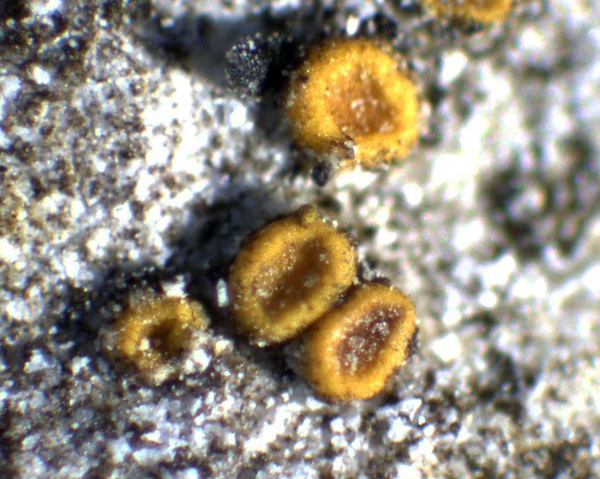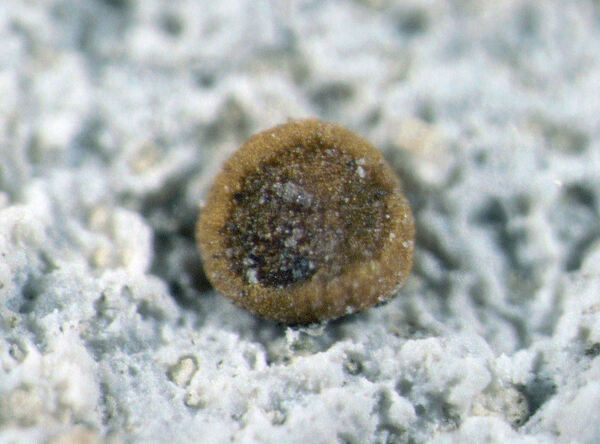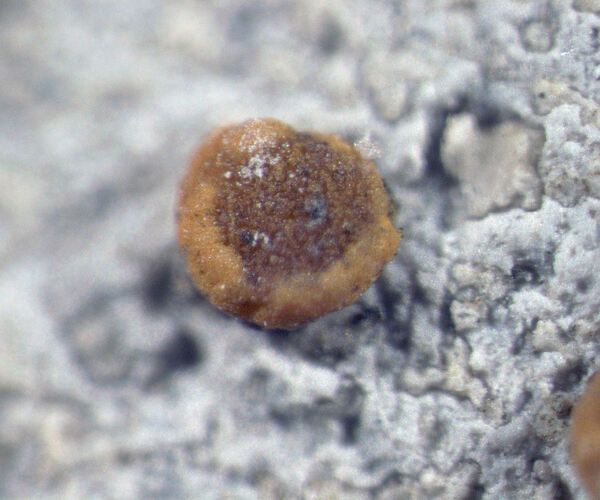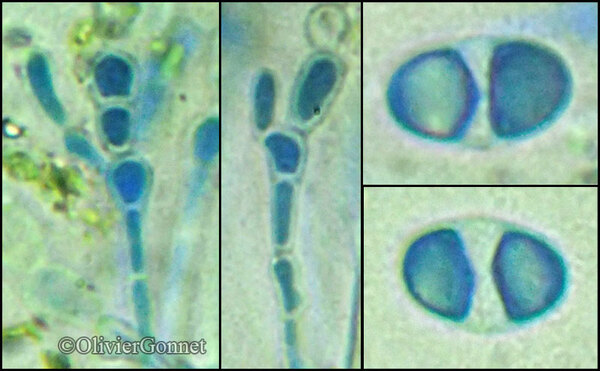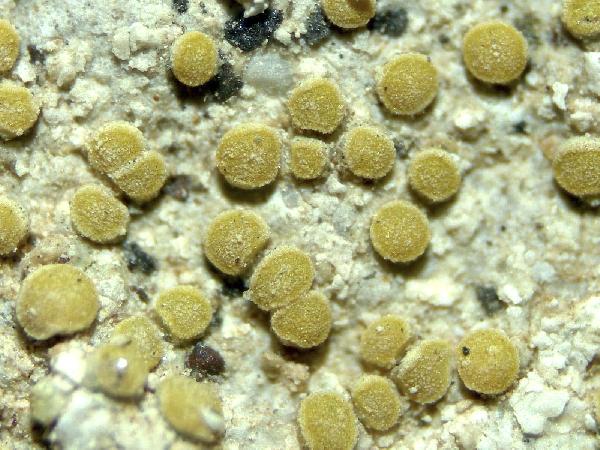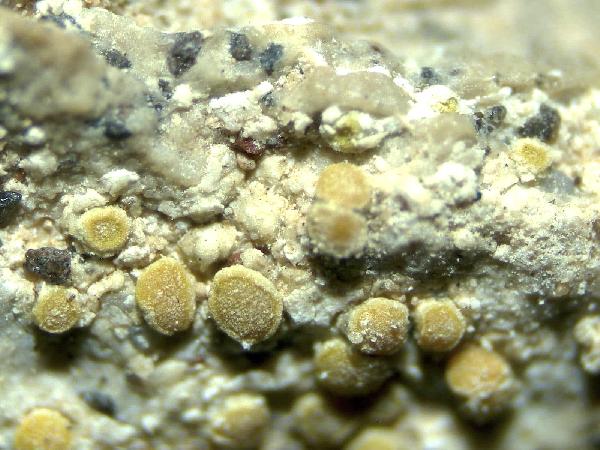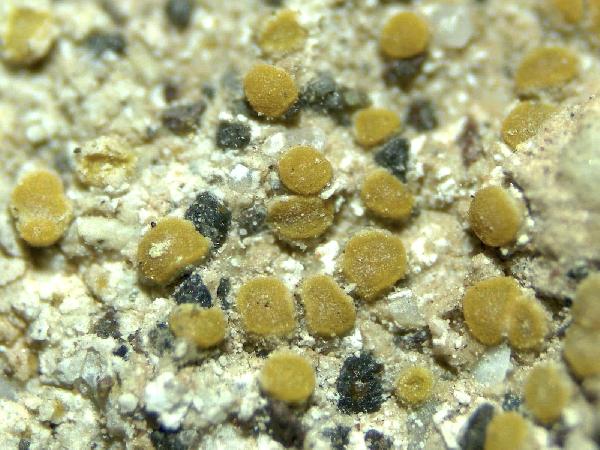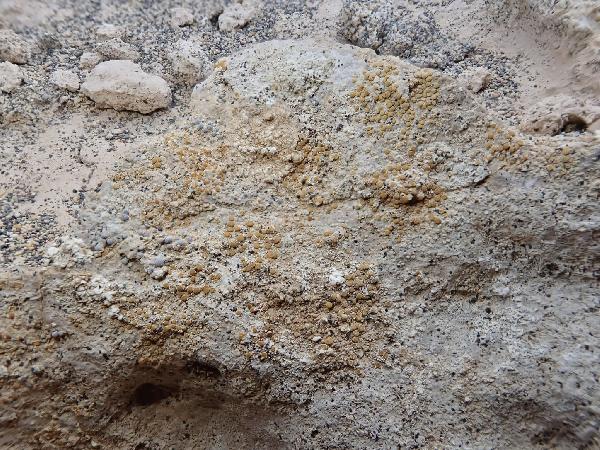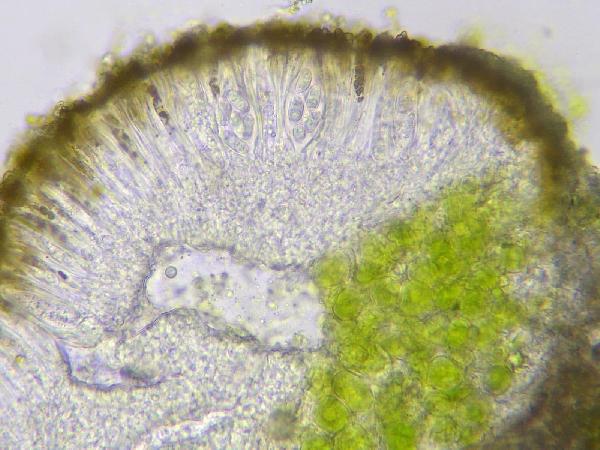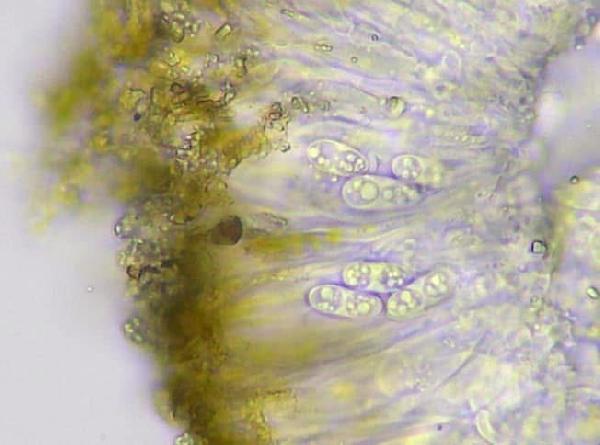Xanthocarpia lactea auct. non (A. Massal.) A. Massal.
Framm. Lichenogr.: 25, 1855. Basionym: Callopisma ochraceum var. lacteum A. Massal. - Flora, 35: 572, 1852.
Synonyms: Blastenia lactea (A. Massal.) Trevis.; Callopisma luteoalbum var. lacteum A. Massal.; Caloplaca lactea (A. Massal.) Zahlbr.; Gyalolechia calcicola Galløe nom. inval.; Gyalolechia lactea (A. Massal.) Arnold; Placodium pyraceum var. lacteum (A. Massal.) A.L. Sm.
Distribution: N - VG, Frl (TSB 5345), Ven (Navarro-Rosinés & Hladun 1996, Arup & al. 2013), TAA (Nascimbene & al. 2022), Lomb, Piem (Morando & al. 2016), VA (Favero-Longo & Piervittori 2009), Emil (Nimis & al. 1996, Fariselli & al. 2020, Brackel 2025), Lig (Giordani & al. 2016). C - Tosc (Navarro-Rosinés & Hladun 1996, Loppi & al. 1998, 2004b), Marc (Nimis & Tretiach 1999), Umb (Genovesi & Ravera 2001, Ravera & al. 2006, Panfili 2007), Laz (Bartoli 1997b), Abr (Nimis & Tretiach 1999, Gheza & al. 2021), Mol (Nimis & Tretiach 1999, Caporale & al. 2008, Genovesi & Ravera 2014), Sar (Rizzi & al. 2011). S - Camp (Nimis & Tretiach 2004, Garofalo & al. 2010), Pugl (Nimis & Tretiach 1999, Durini & Medagli 2002, 2004, Gianfreda & Matino 2020), Bas (Nimis & Tretiach 1999), Cal (CLU 12735), Si (Nimis & al. 1994, Ottonello & Salone 1994, Ottonello & al. 1994, 2011, Monte & Ferrari 1996, Poli & al. 1997, 1998, Grillo 1998, Caniglia & Grillo 2001, 2005, 2006, Grillo & al. 2001, 2002, 2007b, 2009, Grillo & Caniglia 2004, Brackel 2008c, Liistro & Cataldo 2011).
Description: Thallus crustose, endosubstratic, poorly visible or reduced to a few whitish granules, without a distinct prothallus. Apothecia 0.1-0.3 mm across, sessile, scattered, with a flat to slightly concave, yellow-orange disc covered in an abundant yellow pruina, and a concolorous, thin, smooth, persistent proper margin. Thalline margin poorly developed, sometimes visible only on the lower part of apothecia, finely granulose. Proper exciple prosoplectenchymatous, colourless within; epithecium brownish yellow, c. 10 µm thick, K+ red; hymenium colourless, 70-80 µm high; paraphyses simple or sparingly branched in upper part, 1.2-2 µm thick at base, the apical cells swollen, up to 5 µm wide; hypothecium colourless. Asci 8-spored, clavate, functionally unitunicate, apically thickened with a broad internal beak, the inner part of apex and external cap I+ blue, Teloschistes-type. Ascospores 2-celled, polarilocular, hyaline, ellipsoid, 11-14(-16) x 6-8.5(-9.5) µm, the equatorial thickening (“septum”) (1-)2-3(-3.5) µm (c. 1/8 of spore length). Photobiont chlorococcoid. Spot tests: apothecia K+ red. Chemistry: apothecia with parietin (major), fallacinal, emodin, teloschistin and parietinic acid (minor), corresponding with chemosyndrome A of Søchting (1997).Note: a mainly Mediterranean early coloniser of small calcareous pebbles in open habitats (e.g. stony ground in dry grasslands). X. lactea s.str. is a strictly Mediterranean lichen, and some records from the Alps could refer to other Xanthocarpia-species. The name, as applied to the lichen described here, is illegitimate, as it is based on Callopisma ochraceum var. lacteum A. Massal., the type of which is a pale form of X. ochracea, while Caloplaca lactea (A. Massal.) Zahlbr. was based on Callopisma luteoalbum var. lacteum A. Massal., (see Navarro-Rosinés & Hladun 1996), which means that the epithet lactea based on the latter basionym cannot be recombined into Xanthocarpia.
Growth form: Crustose endolithic
Substrata: rocks
Photobiont: green algae other than Trentepohlia
Reproductive strategy: mainly sexual
Pioneer species
Commonnes-rarity: (info)
Alpine belt: absent
Subalpine belt: absent
Oromediterranean belt: very rare
Montane belt: absent
Submediterranean belt: rare
Padanian area: absent
Humid submediterranean belt: rather rare
Humid mediterranean belt: rather common
Dry mediterranean belt: rather common

Predictive model
Herbarium samples
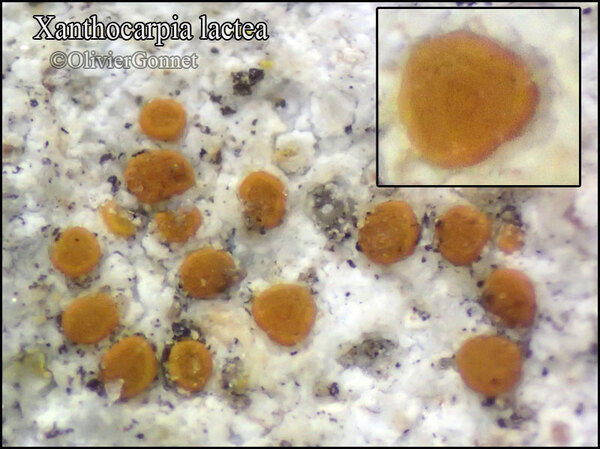
Courtesy Danièle et Olivier Gonnet - https://www.afl-lichenologie.fr/Photos_AFL/Photos_AFL_X/Xanthocarpia_lactea.htm
France, session AFL 2015 - Saint-Sozy - Le Pied Saint Jean - Lot

Courtesy Danièle et Olivier Gonnet - https://www.afl-lichenologie.fr/Photos_AFL/Photos_AFL_X/Xanthocarpia_lactea.htm
France, session AFL 2015 - Saint-Sozy - Le Pied Saint Jean - Lot
Growth form: Crustose endolithic
Substrata: rocks
Photobiont: green algae other than Trentepohlia
Reproductive strategy: mainly sexual
Pioneer species
Commonnes-rarity: (info)
Alpine belt: absent
Subalpine belt: absent
Oromediterranean belt: very rare
Montane belt: absent
Submediterranean belt: rare
Padanian area: absent
Humid submediterranean belt: rather rare
Humid mediterranean belt: rather common
Dry mediterranean belt: rather common

Predictive model
| Herbarium samples |

Courtesy Danièle et Olivier Gonnet - https://www.afl-lichenologie.fr/Photos_AFL/Photos_AFL_X/Xanthocarpia_lactea.htm
France, session AFL 2015 - Saint-Sozy - Le Pied Saint Jean - Lot

 DOLICHENS
DOLICHENS
